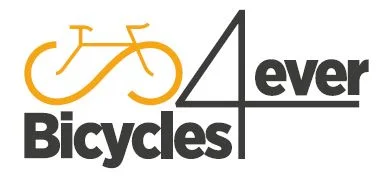Taking RISKS at Collegiate Nationals | NorCal Cycling
Source: NorCal Cycling Youtube Channel: Taking RISKS at Collegiate Nationals
Video Taking RISKS at Collegiate Nationals with NorCal Cycling
Video Taking RISKS at Collegiate Nationals with NorCal Cycling YouTube Channel.
Taking RISKS at Collegiate Nationals
NorCal Cycling: A Deep Dive into Collegiate Racing
The Rising Trend of Collegiate Cycling in Northern California
Collegiate cycling has been gaining incredible traction across the United States, with Northern California emerging as a hotbed for talent and competitive spirit. With a combination of stunning scenery, challenging terrains, and supportive communities, NorCal is home to a plethora of collegiate cycling teams. Institutions like Cal Poly, UC Berkeley, and Stanford contribute to a vibrant cycling culture that fosters both competitiveness and camaraderie among budding athletes.
Understanding the Team Dynamics
At the heart of collegiate cycling’s success is the spirit of teamwork. A perfect example is Cal Poly’s cycling team, where racers like Andrew Carr showcase the importance of clear communication and strategic roles within a race. In interviews, Andrew shares insights on how his team operates, emphasizing that every member has a distinct role, from following attacks to ensuring the sprinter’s success.
Key Roles in Team Cycling
Understanding the various roles within a cycling team is crucial for achieving victory. Each member has responsibilities that contribute to the overall strategy:
- Attacker: Responsible for breaking away from the peloton to disrupt competitors.
- Domestique: Stays close to the sprinter, providing support and marking other teams’ moves.
- Sprinter: The team’s primary hope for victory, who saves energy throughout the race for a final push.
The Importance of Strategic Positioning
During races, strategic positioning can make or break a team’s efforts. Andrew explains how it is essential to remain within the top third of the peloton to respond effectively to attacks while conserving energy. Knowing when to surge and when to draft in the slipstream can significantly impact outcomes and highlights the importance of teamwork in navigating chaotic situations.
Race Strategies: Gathering Insights from Competitors
In one of Andrew’s races, he shares a pivotal moment while marking the moves of opponents such as Owen Cole. This level of awareness not only keeps the top racers in check, but it also sets the stage for teamwork to shine. The anticipation of when to follow an attack or when to control the pace adds layers of excitement and complexity to each race.
Gaining Competitive Edge
The combination of physical strength and mental acuity is what gives collegiate cyclists their competitive edge. Teams like Cal Poly prioritize collaboration among racers to stay ahead of the competition. During competitions, Andrew and his teammates engage in marking key players and fostering a supportive environment that encourages each rider to perform at their best.
Chasing Breakaways
A crucial topic in collegiate cycling is the concept of chasing breakaways. As Andrew points out, a successful breakaway can make the difference between winning and losing. When the pace and rhythm are controlled, sprinters like Dylan can conserve energy for a final sprint. In some cases, unexpected breakaways may develop, forcing teammates to react quickly to maintain strategies. Understanding the balance between responding to attacks and conserving energy becomes an integral element of race success.
The Thrill of the Sprint Finish
No discussion of cycling is complete without addressing the nail-biting sprint finish. As races clock in at high speeds, every second counts. Andrew recalls moments where close positioning and strategic communication became vital as the finish line approached. Techniques like the ‘NorCal special’—a slingshot attack—encapsulate the thrilling dynamics of sprint finishes, creating unforgettable moments for both riders and spectators alike.
Factors Influencing Sprint Success
- Timing: Knowing when to launch the final sprint can significantly alter race results.
- Positioning: Keeping clear of competitors while leveraging momentum can lead to victory.
- Team Support: Having teammates around in the final moments enhances chances of success.
Conclusion: The Future of Collegiate Cycling in NorCal
With strong frameworks established through teamwork, strategic insights, and community support, collegiate cycling in Northern California stands poised for even greater heights. The combination of individual skill sets and collective strategy creates an environment where racers like Andrew Carr can thrive and achieve remarkable outcomes. As the cycling community in NorCal continues to grow, the future will undoubtedly hold even more thrilling competitions and success stories within the realm of collegiate cycling.
The opinions expressed in this space are the sole responsibility of the YouTube Channel NorCal Cycling and do not necessarily represent the views of CicloNews.

